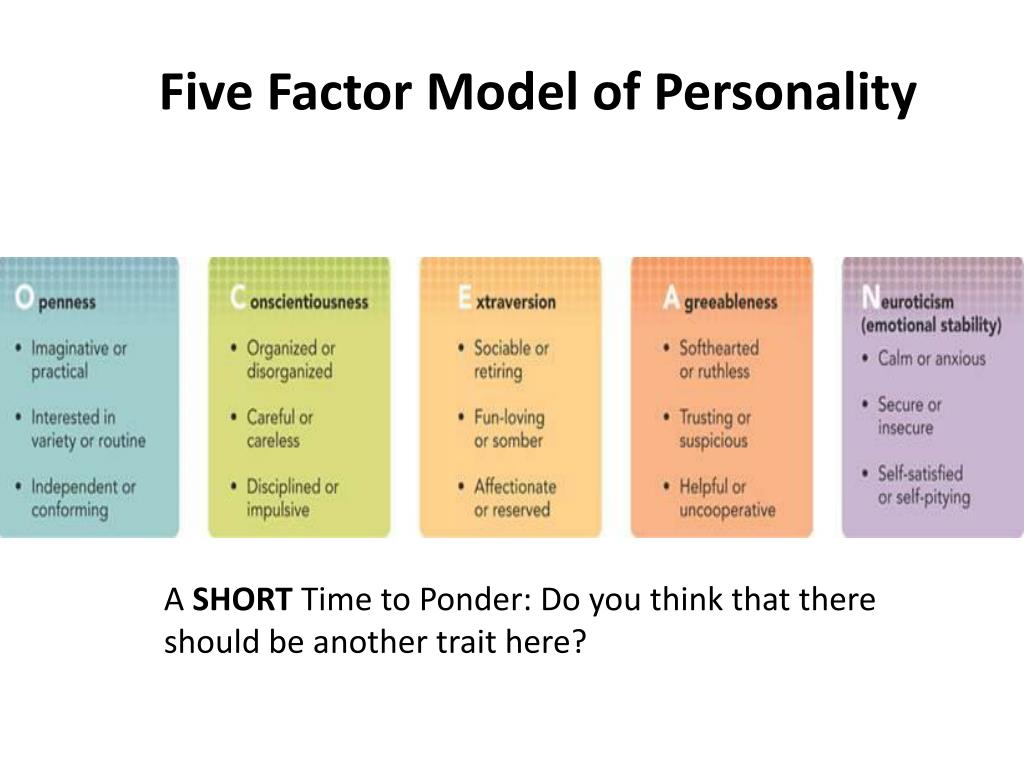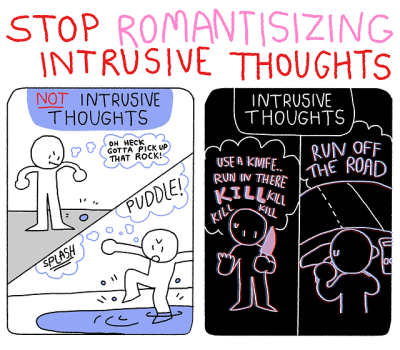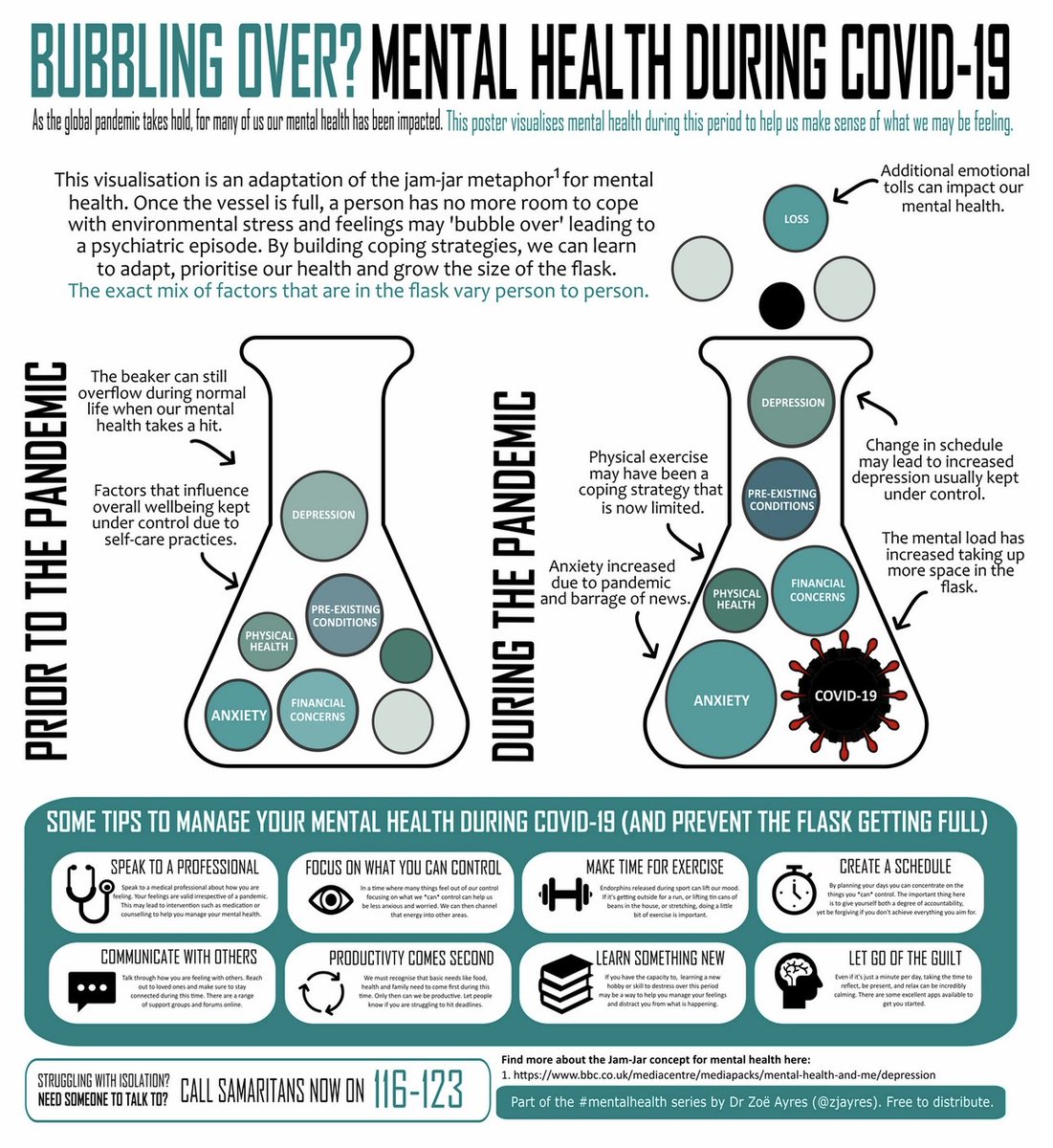What is type theory of personality
What Are The Type Theories of Personality?
- Post author:RAZIA RASHID
- Post published:June 30, 2020
- Post category:personality
Type theories of personality examines certain broad categories of personality and then groups individuals based on the similarity with the group. So, this grouping or sets of types are called as typologies. A type is simply a class of individuals who share a common collection of characteristics. For example people who are shy, socially withdrawn, quite are often categorized as introverts and people who are talkative, sociable, outgoing are classified as extraverts.
Even before the advent of type theories of personality. People have been grouping individuals into sets or groups for a long time now and forms an important part of certain folklore. In America, for example people are often classified as leaders or followers, liberals or conservatives, losers or winners and so forth.
Different Type Theories of Personality
In psychology many theorists have proposed their Type theory of personality. The following are some of the important type theories of personality:
1. Hippocrates Type Theory of Personality
The Greek physician, Hippocrates proposed first theory of personality about 400 BC. He grouped people into types, based on their fluid or humor. And therefore, grouped people into four temperament types, each characterized by specific behavioral features:
- Sanguine: cheerful, vigorous and confidently optimistic.
- Melancholic: depressed and sullen
- Choleric: hot-tempered.

- Phlegmatic: slow-moving, calm and unexcitable.
2. Sheldon’s Type Theory of Personality
Sheldon proposed a personality type based on body build and temperament. These typologies are quite famous in psychology. Sheldon called these types as person’s somatotypes, and also classified them into following:
- Endomorphic: They are fat, soft and round. By temperament they are relaxed, sociable, peaceful, comfort-loving and tolerant.
- Mesomorphs: They have strong musculature, rectangular and with a strong body build. By temperament, they are active, assertive, energetic and courageous.
- Ectomorphs: They are thin, long and fragile in body builds. By temperament, they are brainy, artistic and introvert.
These body type are more like stereotypes which people hold. They are also simple and limited in predicting behavior.
3. Friedman and Rosenman’s Type Theory of Personality
Friedman and Rosenman were studying the psychosocial risk factors, when they discovered the following types of personality:
- Type A: People with type A personality are high motivation.
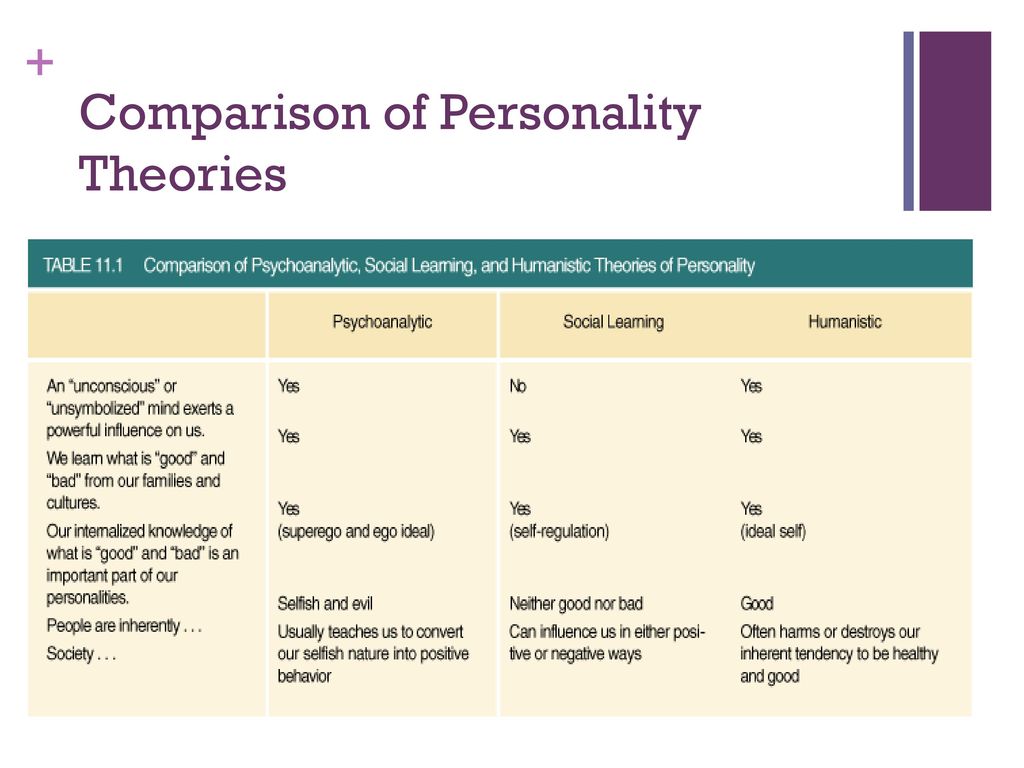 They have a feeling that, time is running out. So, they are always in hurry. They lack patience and also always feel like being burdened with work. People with type A personality are at high risk of developing hypertension and coronary heart disease (CHD). They also find it difficult, to slow down and relax.
They have a feeling that, time is running out. So, they are always in hurry. They lack patience and also always feel like being burdened with work. People with type A personality are at high risk of developing hypertension and coronary heart disease (CHD). They also find it difficult, to slow down and relax. - Type B: Type B personality is opposite of type A. They not only are relaxed, but can also be characterized by the absence of all type A traits.
- Type C: Morris has suggested the type C personality type. People with this personality love details, so use their time to find out how things work. They are cooperative, unassertive and patient. They also, suppress negative emotions such as anger and show compliance to authority. People with this personality are prone to cancer.
- Type D: People with type D personality are pessimistic. Therefore, are prone to depression .
4. Jung’s Type Theory of Personality
Jung has proposed a very recognized typology of personality. He divided people into the following types:
He divided people into the following types:
- Introverts: They are quiet people, who like to spend time alone. Introverts do socialize and talk with people, but they then need time alone, to recharge. They may also seem to be shy.
- Extroverts: Extroverts are sociable and outgoing people. So, they like to draw attention to themselves. And also, choose profession in which they directly have to deal with people.
Conclusion
Understanding the personality of people help us to predict their behavior in varied circumstances. It also helps us to deal with people in better and acceptable ways. For example, if we know that a child is sensitive or is not confident. The more acceptable way to deal with such children is to treat them differently and more carefully than other children.
Tags: Personality, theories of personality
RAZIA RASHID
Razia Rashid is the founder of Psychology To Safety and a freelancer.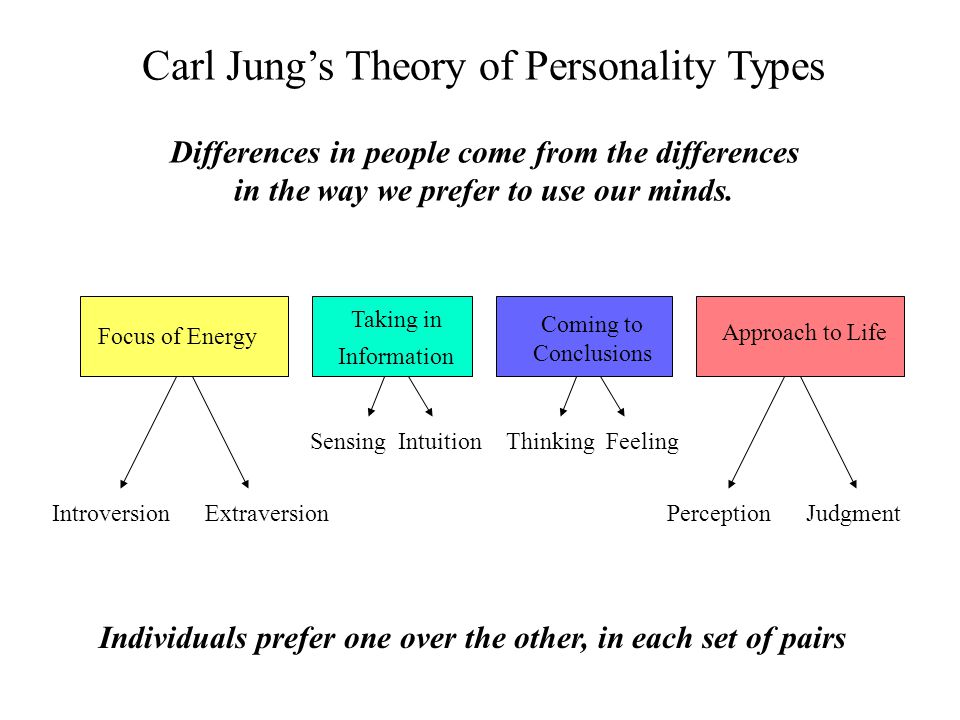 She is interested in studying psychology, women in conflict, and peacebuilding.
She is interested in studying psychology, women in conflict, and peacebuilding.
Personality Type Theory - Four Humors and Carl Jung
The Four Humors and Carl Jung
The Four Humors and Carl Jung
Personality Type Theory and Trait Theory are two opposite sides of how psychologists view Personality. Trait Theorists have probably won this battle in modern times. Type theorists generally believe that each one of us belong to a distinct type of personality.
Discover 10 more articles on this topic
Don't miss these related articles:
- Culture
- Psychodynamic Theories
- Behaviourism
- Social Cognitive Theories
- Trait Theory
Because of the differences and similarities we have, the personality type theory has been developed in order for us to determine our personality during a certain point in time. This theory is crucial to understand because some personality types need to be dealt with for a person to be mentally and emotionally healthy.
Under the personality type theory, there are personality type taxonomies and subtypes. The two most common of these taxonomies are the Four Humors, which were credited to the ancient Greeks, and the eight personality types outlined by Carl Jung.
Ancient Greeks: The Four Humors
Two of the noblest ancient Greek philosophers, Hippocrates (400 BC) and Galen (140 AD) were among the first ones to logically classify the personality types of people, which they called “humors”. The ancient Greek believed that each of the 4 humors was a result of an excess of one of the 4 bodily fluids. For them, the excess amount of fluids determined a person’s character. The 4 humors included choleric (yellow bile), melancholic (black bile), sanguine (blood) and phlegmatic (phlegm). Below is a table showing the character that each humor or fluid represents.
Character | Humor | Fluid | Produced by | Element |
Irritable | Choleric | Yellow bile | Spleen | Fire |
Depressed | Melancholic | Black bile | Gall bladder | Earth |
Optimistic | Sanguine | Blood | Liver | Air |
Calm | Phlegmatic | Phlegm | Lungs | Water |
Carl Jung: Eight Personality Types
The Personality Type Theory of Carl Jung was founded in his ideas on what attitude means.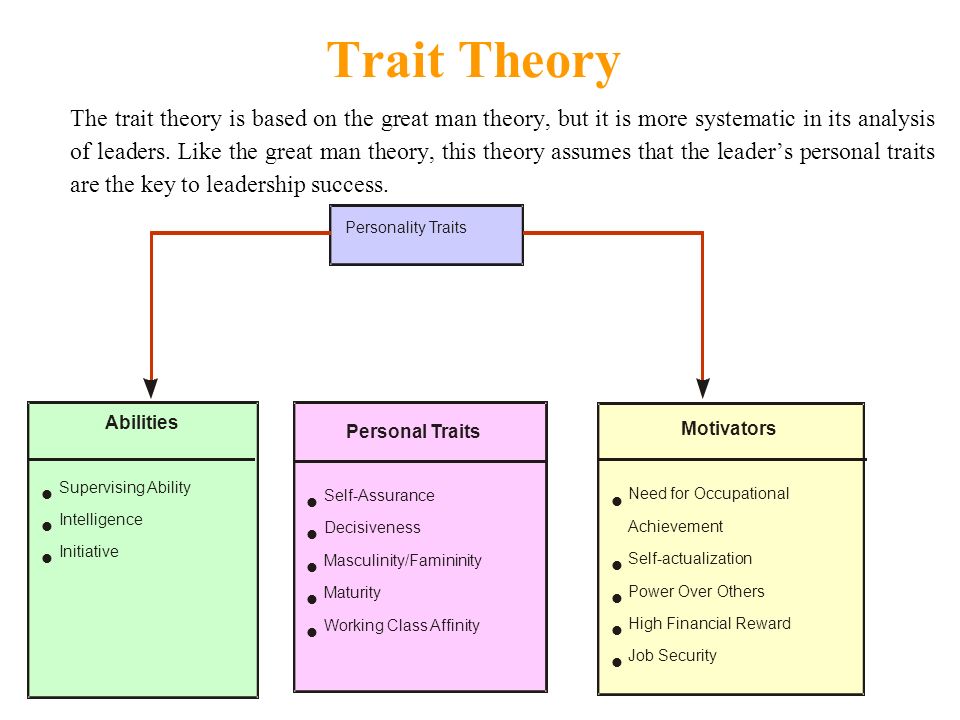 For Jung, attitude is a person’s predisposition to act in a certain manner. He said that there are two contrasting attitudes- extroversion and introversion, which are often depicted as the classic yin-yang symbolism.
For Jung, attitude is a person’s predisposition to act in a certain manner. He said that there are two contrasting attitudes- extroversion and introversion, which are often depicted as the classic yin-yang symbolism.
The introvert person is one that is more conscious of his inner world than his environment. Although he still perceives the things going on around him, he is more concerned of what’s going on inside himself. He focuses on his own fantasies, ambitions, feelings and actions. Subjectivity for this kind of person is greater than objectivity. Typically, the “shy” personality is under the introvert type of attitude. On the other hand, the extrovert person gives more attention of what’s happening outside his inner world. His inner cognitive processes are often set aside as he gets influenced by his environment. Objectivity for this kind of person is greater than subjectivity. In layman’s term, the “outgoing” personality is synonymous to extroversion.
Another important concept in Jung’s theory is the four functions of personality.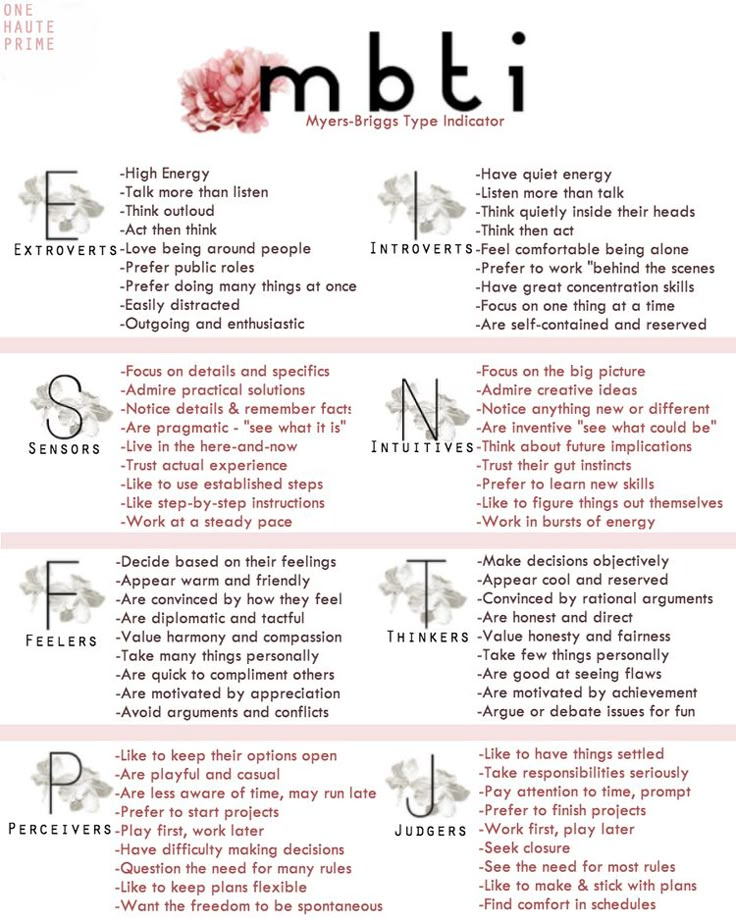 The first function is “feeling”, which is when a person recognizes the worth of conscious activities. The second one is “thinking”, which makes a person learn the meaning of something. The third one is “sensation”, which allows the person to know that a particular thing exists. The last one is “intuition”, which gives him knowledge about something without having a conscious understanding of where that knowledge originated. When these 4 functions are combined with one of the two types of attitudes, the result would be eight varying types of personality. The table below shows the eight different personality types:
The first function is “feeling”, which is when a person recognizes the worth of conscious activities. The second one is “thinking”, which makes a person learn the meaning of something. The third one is “sensation”, which allows the person to know that a particular thing exists. The last one is “intuition”, which gives him knowledge about something without having a conscious understanding of where that knowledge originated. When these 4 functions are combined with one of the two types of attitudes, the result would be eight varying types of personality. The table below shows the eight different personality types:
| Function | Attitude | |
| Extrovert (objective) | Introvert (subjective) | |
| Feeling | Comfortable in social circumstances and give opinions based on social norms, values and generally accepted beliefs | Often defies social norms of thinking and speaks of internally-established beliefs |
| Thinking | Learns abstract concepts that are taught by his environment | Interprets environmental stimuli |
| Sensing | Recognizes the world just the way it is and gives perceptions in a matter-of-fact manner | Views the world based on internal reflections and own attitudes. |
| Intuitive | Perceives things based on what society dictates, disregarding the perceptions brought about by his senses | Greatly influenced by internal drives although he doesn’t have a full understanding of these motivations. |
Full reference:
You Are Allowed To Copy The Text
The text in this article is licensed under the Creative Commons-License Attribution 4.0 International (CC BY 4.0).
This means you're free to copy, share and adapt any parts (or all) of the text in the article, as long as you give appropriate credit and provide a link/reference to this page.
That is it. You don't need our permission to copy the article; just include a link/reference back to this page. You can use it freely (with some kind of link), and we're also okay with people reprinting in publications like books, blogs, newsletters, course-material, papers, wikipedia and presentations (with clear attribution).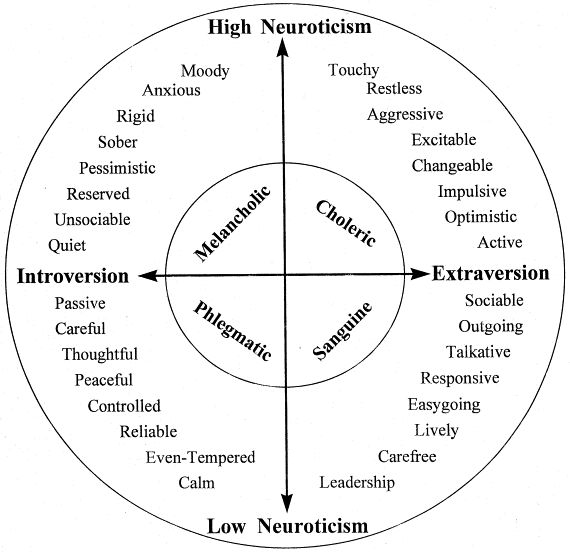
Related articles
Related pages:
http://www.odportal.com/
Want to stay up to date? Follow us!
Follow @ExplorableMind
48. Eysenck's theory of personality types.
Eisenk believed that to explain most human behavior is necessary not
more three superdamn , which he called types. In its turn, each of these features
includes several compound traits . These constituent features are qualities,
inherent this type. And finally, traits are made up of numerous habitual reactions (PR), which, in turn, are formed out of specific reactions (SR).
Eysenck sees personality as hierarchical organization.
-
On the most general level types,
-
On next level - traits,
-
Below – level of habitual reactions,
-
Below - specific reactions, i.e. Really observable behavior.
On type level Eysenck analyzes personality by three directions : neuroticism, extraversion-introversion, psychotism.
B basis his theory lies idea that people differ based on heredity - by reactivity nervous system, speed and strength conditional reactions.
Introversion - extraversion . Differences in the processes of inhibition and excitation of the nervous system.
-
Extroverts have a strong nervous system which slows down relatively quickly. overstimulation. extroverts insufficiently excitable and therefore insensitive to incoming information. An extrovert is an individual of thought, feeling, whose interests and actions are addressed on surrounding, on objects of the outside world
-
Introverts have physiological mechanisms which turn off more slowly overstimulation. They have a weak nervous system that specializes excited, but quickly exhausted. The predominance of excitation over braking. mental energy is directed inwards myself. His thoughts, interests and even actions are turned to your own "I". Manifested propensity for isolation, analysis of one's own mental experiences.
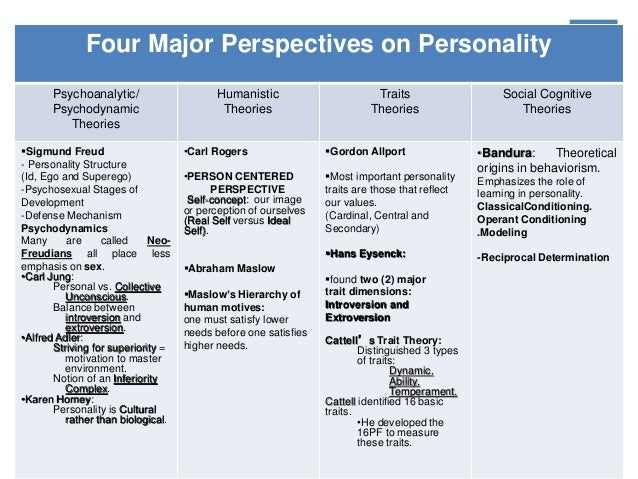
Stability - neuroticism . Connected with activity limbic system and with an autonomous reaction force nervous system to a stimulus.
People With high level of neuroism respond faster into painful, unusual and defiant anxiety stimuli than more stable ones personality. They find more prolonged reactions, even after disappearance stimulus. Greater limbic activity systems, more emotional arousal in case of threat or stress situations. A strong factor neuroticism.
These the two factors are statistically independent from each other, and therefore Eysenck singles out 4
groups people:
-
stable introvert;
-
neurotic introvert;
-
stable extrovert;
-
neurotic extrovert.
These four categories of people some combination.
-
Stable introvert - calm, balanced, reliable, controlled, peaceful, attentive, caring, passive.
-
Stable extrovert - leader, carefree, cheerful, flexible, responsive, talkative, friendly, sociable.
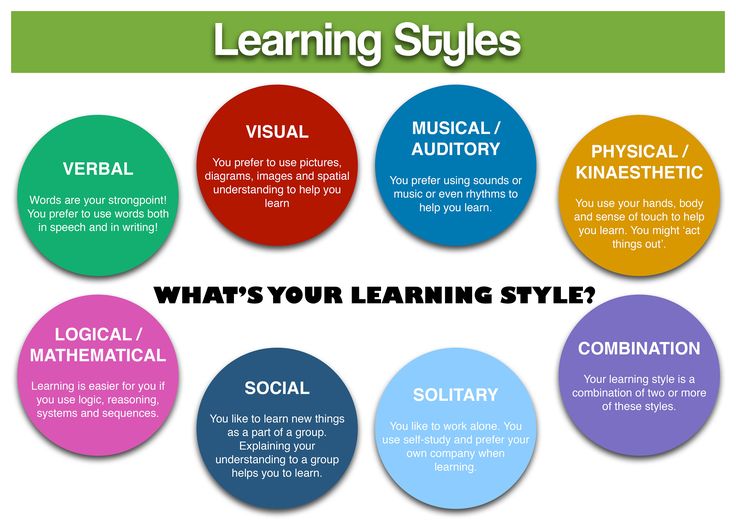
-
Neurotic introvert - anxious, rigid, easily amenable shifts mood, thoughtful, pessimistic, withdrawn, unsociable, quiet.
-
Neurotic extrovert - vulnerable, restless, aggressive, excitable, fickle, impulsive, optimistic, active.
Eisenk believed that no combination of these types cannot be preferred, they are just different. Personality types by Eysenck are continuums, where between two extreme points characteristics of individuals are located. Personality types are not discrete, and most people don't fall under extreme categories.
Basic personality types according to Eysenck
09/28/2011
Eysenck believed that no more than three superfeatures, which he called types, were needed to explain most human behavior. In turn, each of these traits includes several component traits. These composite traits represent the qualities inherent in this type. And finally, traits consist of numerous habitual responses (FR), which, in turn, are formed from specific responses (SR).
And finally, traits consist of numerous habitual responses (FR), which, in turn, are formed from specific responses (SR).
Eysenck sees a hierarchical organization in the personality. At the most general level - types, at the next level - traits, below - the level of habitual reactions, at the bottom - specific reactions, i.e. actual observable behavior.
At the level of types, Eysenck analyzes personality in three directions: neuroticism, extraversion-introversion and psychotism. Most deeply, he explores neuroticism and extraversion-introversion.
His theory is based on the idea that people differ on the basis of heredity - in the reactivity of the nervous system, the speed and strength of conditioned reactions. These individual differences correlate with personality dimensions of neuroticism and extraversion-introversion. In studies of the structure of personality, Eysenck distinguishes two main types of personality measurement:
- introversion - extraversion
- neuroticism (instability) - stability
Eysenck tried to establish a neurophysiological basis for each of the super personality traits.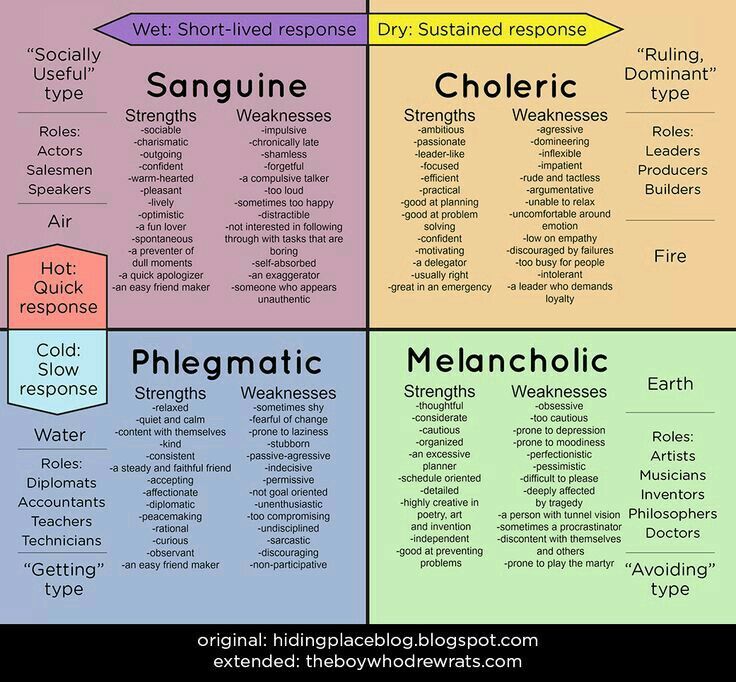
Eysenck believes that introversion - extraversion are based on differences in the processes of inhibition and excitation of the nervous system. Eysenck believes that some people have relatively stronger excitation, while others have stronger inhibition. Extroverts have a strong nervous system that slows down overstimulation relatively quickly. That. the behavior of extroverts is characterized by the predominance of the process of inhibition. Extroverts are not excitable enough and therefore insensitive to incoming information. Accordingly, they are constantly looking for situations that can excite them.
Introverts have physiological mechanisms that turn off overstimulation more slowly. They are said to have a weak nervous system, specialized in excitement, but quickly depleted. The predominance of excitation over inhibition is characteristic of the behavior of introverts. That. introverts are extremely excitable, and therefore highly sensitive to incoming stimulation.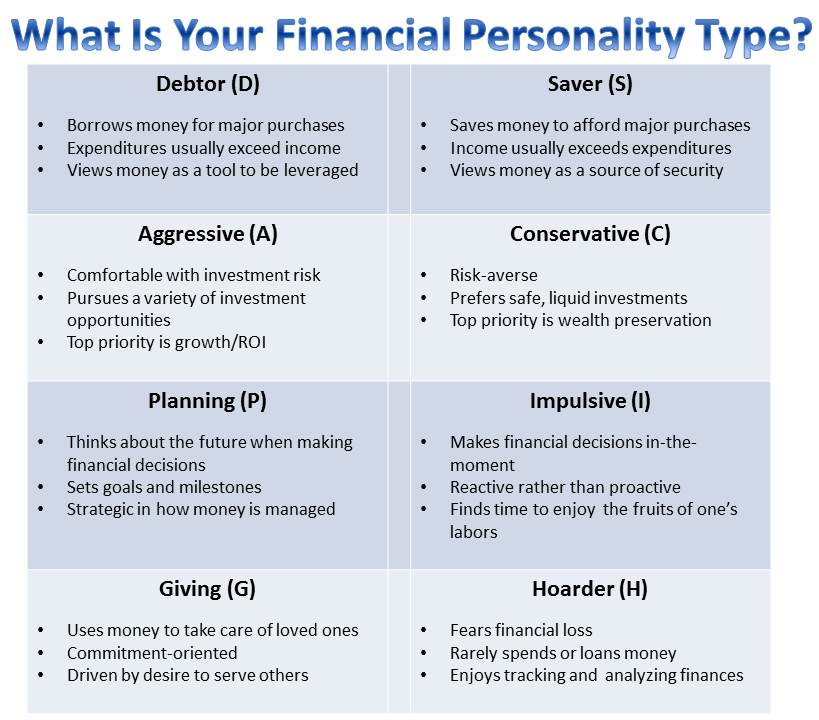 For this reason, they avoid situations that overly affect them.
For this reason, they avoid situations that overly affect them.
Introversion-extraversion is related to the level of cortical activation.
An extrovert is an individual whose thoughts, feelings, interests and actions are directed towards those around him, towards the objects of the outside world. He is good and easy to come into contact with other people, easily adapts to new situations.
An introvert is an individual whose psychic energy is directed inward towards himself. His thoughts, interests and even actions are turned to his own "I". In this regard, introverts show a tendency to isolation, constant analysis of their own mental experiences.
The second factor in the Eysenck model is stability-neuroticism, which is related to the activity of the limbic system and the strength of the response of the autonomic nervous system to a stimulus. People with a high level of neuroism respond faster to painful, unusual, and anxiety-provoking stimuli than more stable personalities. They are more likely to show longer responses, even after the stimulus has disappeared. Greater activity in the limbic system causes some people to become more emotionally aroused in the event of a threat or stressful situation. These people have a strong neurotic factor.
They are more likely to show longer responses, even after the stimulus has disappeared. Greater activity in the limbic system causes some people to become more emotionally aroused in the event of a threat or stressful situation. These people have a strong neurotic factor.
These two factors are statistically independent of each other, and therefore Eysenck distinguishes 4 groups of people:
- stable introvert;
- neurotic introvert;
- stable extrovert;
- neurotic extrovert.
These four categories of people represent some combination of a high or low score in one type of range, together with a high or low score in another type of range. Associated with each type are characteristics whose names are reminiscent of descriptions of personality traits.
- Stable introvert - calm, balanced, reliable, controlled, peaceful, attentive, caring, passive.
- Stable extrovert - leader, carefree, cheerful, flexible, responsive, talkative, friendly, sociable.
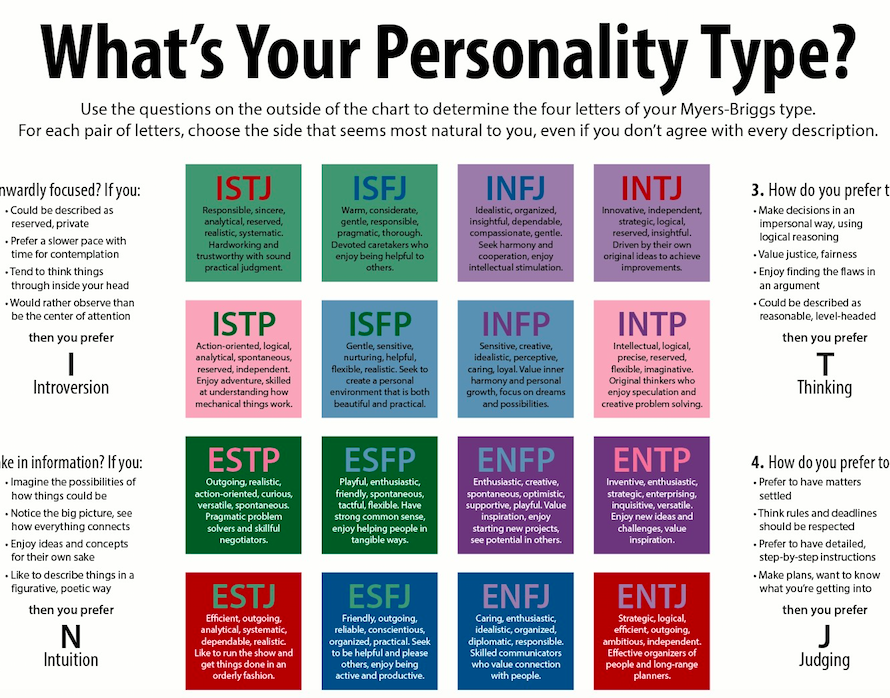
- Neurotic introvert - anxious, rigid, easily amenable to mood swings, reasonable, pessimistic, withdrawn, unsociable, quiet.
- Neurotic extrovert - vulnerable, restless, aggressive, excitable, unstable, impulsive, optimistic, active.
Most people are closer to the middle point - in both ranges of types, and therefore do not get such extreme variants of characteristics as presented above.
Eysenck believed that no combination of these types could be better than another, they are just different.
According to Eysenck, personality types are continuums on which characteristics of individuals are located between two extreme points. Personality types are not discrete, and most people do not fall into extreme categories.
Eysenck designed a personality questionnaire to determine individual differences in the main superfeatures. He argues that individual differences in behavior can be identified through factor analysis and measured using questionnaires and laboratory procedures.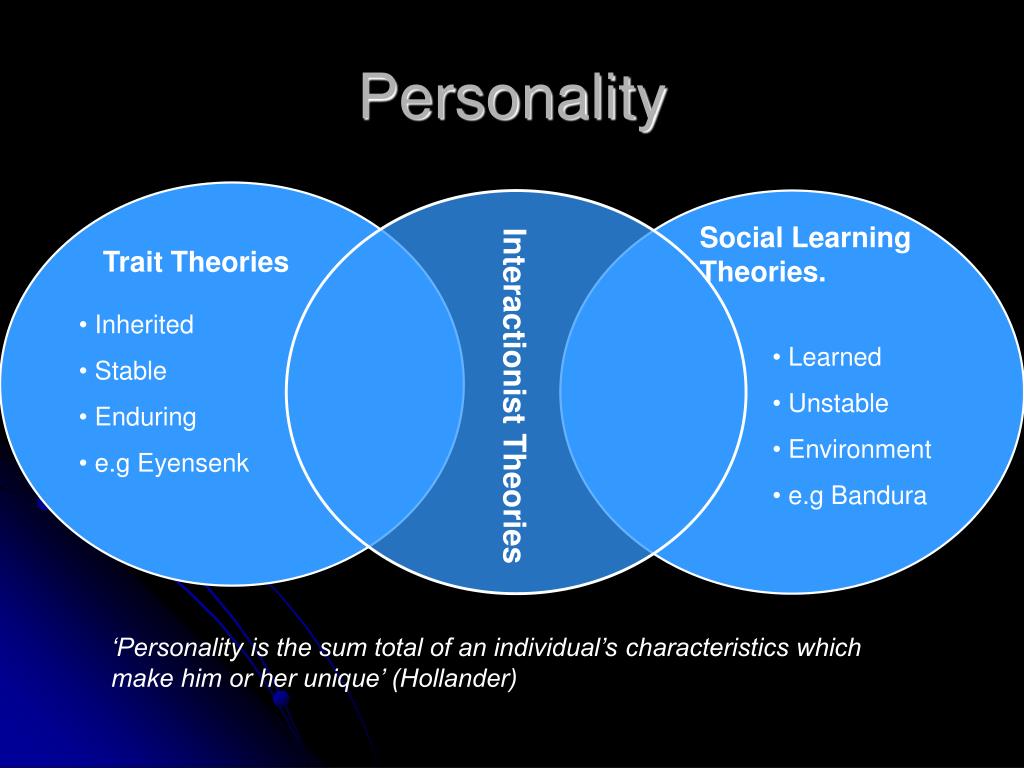
Key words: Personality
Source: Melnik S.N., Psychology of personality
| Related materials |
|---|
| Personality structure according to K.K. Platonov ... |
| Types of "personality changes" in psychiatry Handbook of psychiatry / N.M. Zharikov, D.F. Khritinin, M.A. Lebedev. - M .: LLC "... |
| Social maturity of personality Rean AA, Psychology of personality. - St. Petersburg: Peter, 2013. - 288 p.: ill. - (Series "Masters ... |
| Harmonic personality Fridman L.M., Kulagina I.Yu. - Teacher's psychological guide |
| Socio-psychological characteristics of personality Cheldyshova N. |
